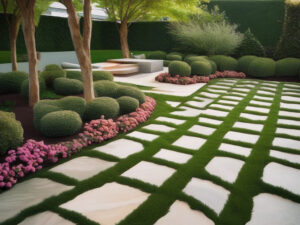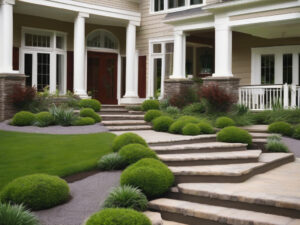Landscaping Terms
Landscaping vocabulary plays a vital role in effective communication with professionals in the field. Understanding common landscaping terms ensures clear discussions and precise project specifications. By familiarizing oneself with terms like “xeriscaping,” “hardscape,” and “perennials,” individuals can articulate their landscaping preferences accurately. This knowledge aids in creating a shared vision between property owners and landscape professionals, leading to successful outdoor projects.
To navigate landscaping projects confidently, individuals need to grasp key concepts in the industry. Terms such as “softscape” and “hard landscaping” distinguish between plant-based elements and non-living features in outdoor design. Understanding the difference between “hardscape” materials like stone, concrete, or wood and “softscape” elements including plants, soil, and flowers is essential for developing comprehensive landscape plans. With this knowledge, property owners can engage in meaningful discussions with landscape experts to bring their outdoor visions to life.
Design Elements in Landscaping
Texture, Form, and Color

Texture, form, and color are fundamental design elements in landscaping. Textures add depth and visual interest to outdoor spaces. For example, a mix of rough stone walls and smooth water features can create a visually appealing contrast. Forms refer to the shapes of plants, hedges, and structures in a landscape. Incorporating plants with varying heights and shapes can enhance the overall design. Colors play a crucial role in evoking emotions and setting the mood in a garden. For instance, warm colors like red and yellow can create a vibrant atmosphere, while cool colors like blue and purple promote a sense of calmness.
Scale and Balance
Achieving the right scale and balance is essential in landscape design. Scale refers to how elements relate to each other in size and proportion. It’s important to consider the size of plants in relation to the overall space to maintain harmony. Balance involves distributing visual weight evenly in a landscape. For example, placing a large tree on one side of a garden can be balanced by grouping smaller plants on the opposite side. Balancing elements create a sense of equilibrium and visual stability in outdoor areas.
Hardscape vs. Softscape
Defining the Distinction

Hardscape refers to the non-living, man-made features incorporated into a landscape. Examples of hardscape elements include pathways, patios, decks, walls, and pergolas. These structures provide the framework and functionality of an outdoor area, defining its shape, organization, and usability. It’s important to consider hardscape elements when planning a landscape design to ensure proper integration with the natural surroundings.
In contrast, softscape encompasses the living, horticultural aspects of landscaping, such as plants, flowers, trees, shrubs, and grass. It adds texture, color, and seasonal interest to outdoor spaces, softening the harsh lines of hardscape elements and creating a harmonious blend with the environment. Softscape elements require ongoing maintenance, including watering, pruning, and fertilizing, to thrive and enhance the overall aesthetics of the landscape.
Elements of Hardscape and Softscape
The elements of hardscape focus on structures and features that define the layout and functionality of an outdoor area. These could include:
- Pathways: Walkways that guide movement throughout the landscape.
- Patios: Outdoor spaces for dining, entertaining, or relaxation.
- Walls: Provide structure, boundaries, and privacy to a yard or garden.
- Decks: Raised platforms typically attached to a house, offering an elevated outdoor living space.
- Pergolas: Architectural structures that provide shade and visual interest.
On the other hand, softscape elements involve the living, botanical elements that contribute to the beauty and ecosystem of a landscape. Some common softscape elements include:
- Plants: Including flowers, trees, shrubs, and grasses that add color and vitality.
- Mulch: Helps retain moisture, suppress weeds, and improve soil health.
- Groundcover: Low-growing plants that cover the soil and reduce erosion.
- Turf: Grass that forms the base of many landscapes, providing a green backdrop.
Understanding landscaping terms is essential for effective communication with professionals and achieving successful outdoor projects. By familiarizing oneself with terms like “xeriscaping,” “hardscape,” and “perennials,” individuals can articulate their landscaping preferences accurately. Distinguishing between “softscape” and “hard landscaping” elements enables property owners to engage meaningfully with landscape experts and bring their outdoor visions to life. Recognizing design elements such as texture, form, and color, as well as the importance of scale and balance, plays a pivotal role in creating visually appealing outdoor spaces. Furthermore, differentiating between formal and informal garden styles provides insights into design aesthetics. Embracing sustainable approaches like xeriscaping and considering zones and microclimates for plant selection and placement are crucial steps toward achieving thriving, well-designed landscapes. Mastering landscaping terminology empowers individuals to make informed decisions and collaborate effectively with landscape professionals for stunning outdoor transformations.
